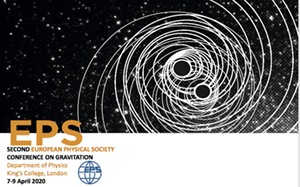Speaker
Description
In the context of the future space mission, the Laser Interferometer Space Antenna (LISA), the stochastic background of gravitational waves (SGWB) will be very rich. LISA will simultaneously observe background signals of stochastic gravitational waves of different origins; orbitally modulated waveforms from galactic white dwarf binaries, a background produced by binaries of black holes and neutron stars, and possibly a cosmologically produced SGWB.
We present two studies to separate the different components of the SGWB, a Fisher Information study and an Adaptive Markov Chain Monte Carlo method. We simulate the galactic foreground with the Lamberts \textit{et al} distributions and generate the modulated waveform, due to the LISA orbital motion. The astrophysical background is predicted by the LIGO/Virgo observations. In this large context, we study the limit of the potential detectability of a cosmological source. We explore strategies for the study in the spectral domain with the LISA channels $ A $, $ E $ and $T $, and explore ways to best estimate the LISA noise. We also analyze LISA Pathfinder data in order estimate the effects of correlated noise on the LISA SGWB search. Finally, we are able to separate a cosmological source energy density of about $ \Omega_{GW,Cosmo} \approx 8 \times 10^{-13}$ in the LISA band.

